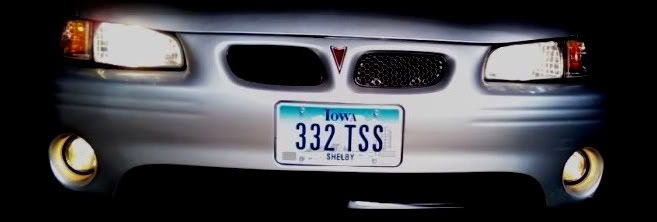is there really anything special about the optama batteries other then the price?
|
|

is there really anything special about the optama batteries other then the price?


They are AGM batteries. Meaning there is no fluid acid in them. It is absorbed in a glass mat. They can take a hell of a beating and still work. One down side is high amp alternators tend to kill them quicker.


Personally i think caps are a waste of time haha, but whatever you like to spend your money on is cool. I've had a few types of batteries, and currently have optima's. Since you have a stereo, you should look for a battery with higher cold cranking amps.
 3.4 ZZP Modular Pulley, K and N FIPK, 180 t-stat, DHP V 1.0 PCM, Autolite 104's, Taylor 8mm Red Wires, SSAC Headers, Dynomax Tips, High-flow mufflers, Drilled and Slated Rotors, 13.5 Jl audio w6's, U.S. Amp MD3D, Lanzar 500x2, Blue Underglow, 3 Optima Red top batteries
3.4 ZZP Modular Pulley, K and N FIPK, 180 t-stat, DHP V 1.0 PCM, Autolite 104's, Taylor 8mm Red Wires, SSAC Headers, Dynomax Tips, High-flow mufflers, Drilled and Slated Rotors, 13.5 Jl audio w6's, U.S. Amp MD3D, Lanzar 500x2, Blue Underglow, 3 Optima Red top batteries 

Alt is what powers your system, nothing else while its running.
If your voltage ripples then its because you bought a ****ty amp which didn't have a stable enough power supply.

not even close LOL I'm referring to the unit inside the amp that takes the constant voltage and converts it to a usable voltage for the rest of the amp.

ahhh ya idk it is a kenwood and normally there stuff is decent but i got the set up for like 250$ and i think the amp cost more then that originally so i cant complain


Hello, I saw our batteries being mentioned in this thread, so I thought I'd offer some input from our end. No SLI (starting/lighting/ignition) battery likes to be deeply-discharged (below 10.5 volts), but as izup69 mentioned, he has deeply-discharged his Optima RedTop many times and successfully brought it back up. Trolling motors can take batteries down below 6 volts, so we recommend deep-cycle (BlueTop) batteries for those applications.
If you do discharge an Optima battery below 10.5 volts, many older chargers will not charge it and some auto parts stores will test it as having a dead cell. Some do have dead cells, but often times, the battery just needs to be properly re-charged. A newer charger with AGM-specific settings can do this, but an older charger can also do this, using a technique involving a second battery.
To charge the Optima battery, wire a second, fully-charged automotive battery (12V+) to the discharged Optima in parallel (+ to + and – to –). Then hook up the charger to the discharged battery, setting the charger at 10 amps. Maintain this for two hours, monitoring frequently. When the discharged battery reaches 10.5 volts or more, remove the second battery and continue charging the Optima until fully charged.
Typically we recommend charging at a relatively low current, such as 2 amps, but when the battery has been deeply discharged, some sulfation of the battery plates may have occurred. If you charge at 10 amps, the higher current will help to break up this sulfation.
If you have an automatic charger, let it run until the charger indicates charging is complete. If you have a manual charger, estimate charging time by multiplying the capacity (amp hours or Ah) of the battery by 1.2 for a rough estimate of charging time in hours.
In most cases these steps will recover an Optima battery. It’s okay for the battery to get slightly warm during the charging process, but hot to the touch means there’s a short and the process should be discontinued.
High CCA (cold cranking amps) are important if you live somewhere that gets cold. If you live in Phoenix, it's not as important. If you have an aftermarket audio system that draws a lot of power or is frequently left on when the car isn't running, we recommend a deep-cycle (YellowTop) battery.
Optima batteries are AGM-style, spiral cell batteries, constructed with 99.99% pure lead. That creates a lower internal resistance than typical wet, lead-acid batteries, allowing it to efficiently deliver a burst of power when needed for starting or audio systems. This low internal resistance will also allow it to charge very efficiently, which means your alternator won't have to work as hard.
Another thing to remember, regardless of the battery you are using is that it's almost impossible to have grounds that are "too good." One-wire alternators are especially sensitive to good, quality grounds.
When buying a replacement battery for your vehicle, it’s a good idea to find out how old the battery is that you are purchasing. Optima batteries have a serial number on a white, 1”x3” non-spillable decal on the side of the battery. The first digit is the year of manufacture. Digits two-four are the Julian date of manufacture. For example, if your serial number is 9243xxxxxx, this means your battery was made on the 243rd day (August 31st) in 2009.
Also, take a close look at the terms of your warranty. Some longer warranties begin pro-ration as soon as 90 days after purchase or have many exclusions, while others offer free replacement periods lasting much longer. If you have any other questions, I'll do my best to answer them.
Thanks for your interest in Optima Batteries!
Jim McIlvaine
eCare Manager, Optima Batteries
| « Previous Thread | Next Thread » |
| Tags for this Thread |